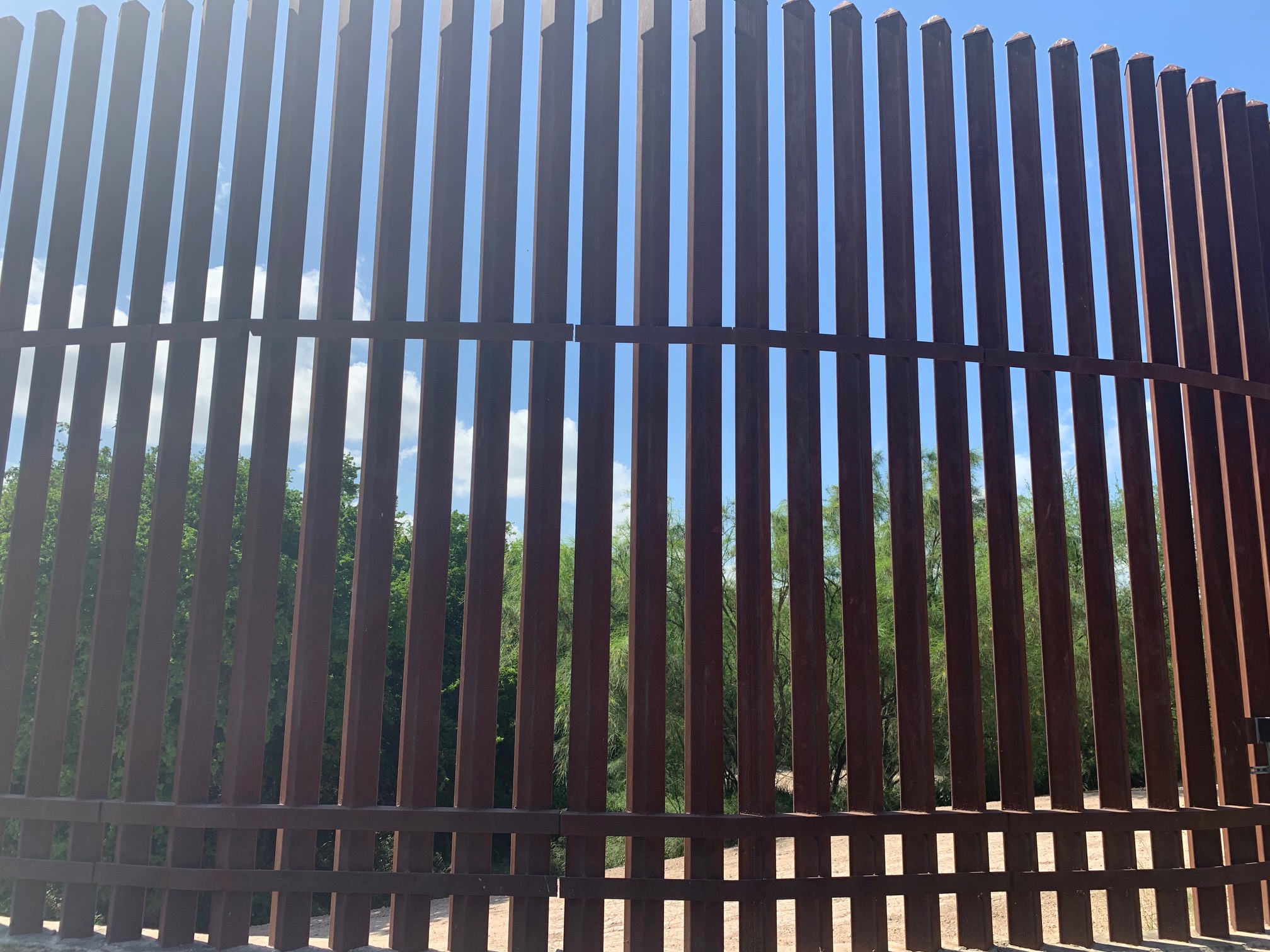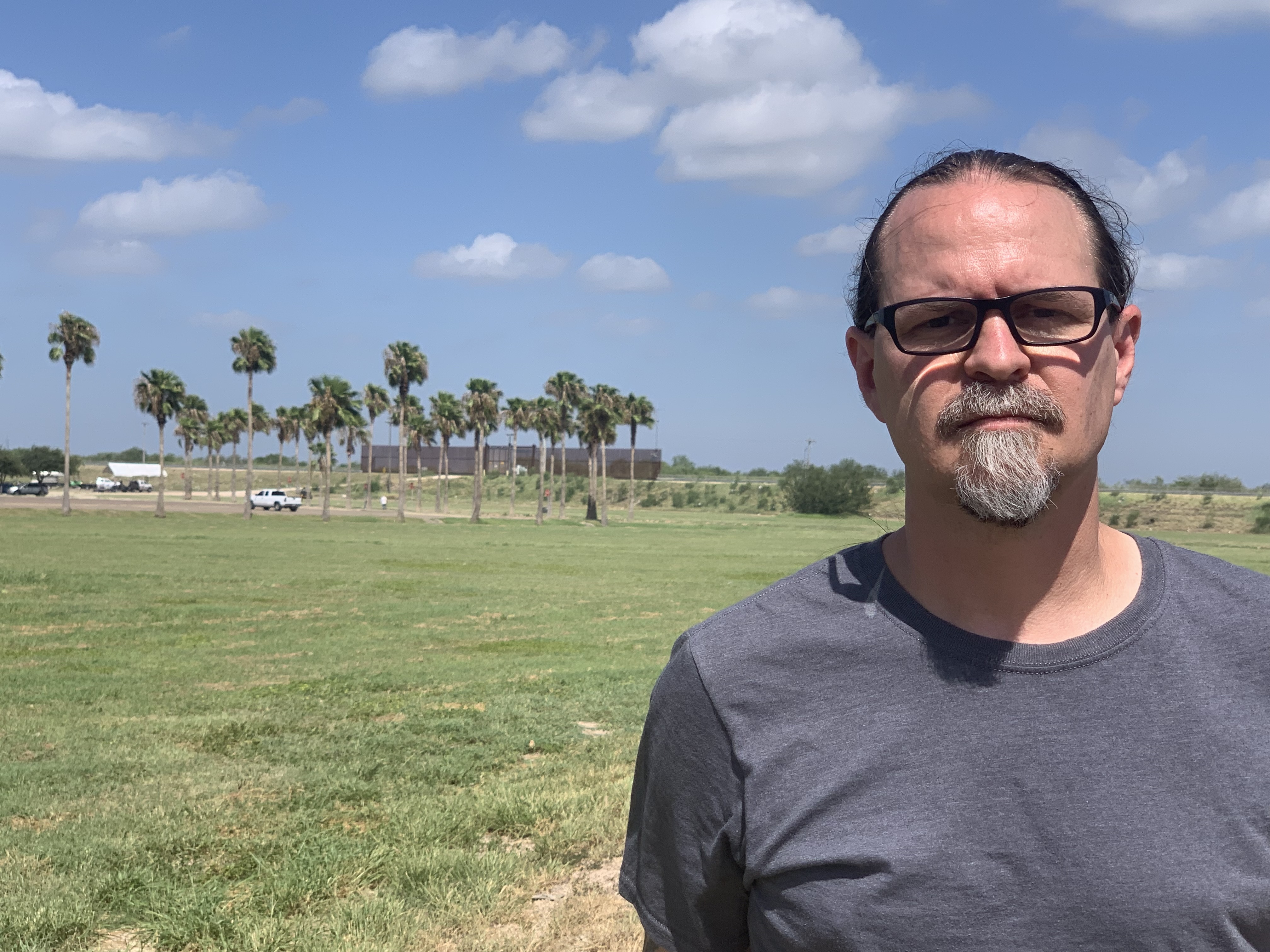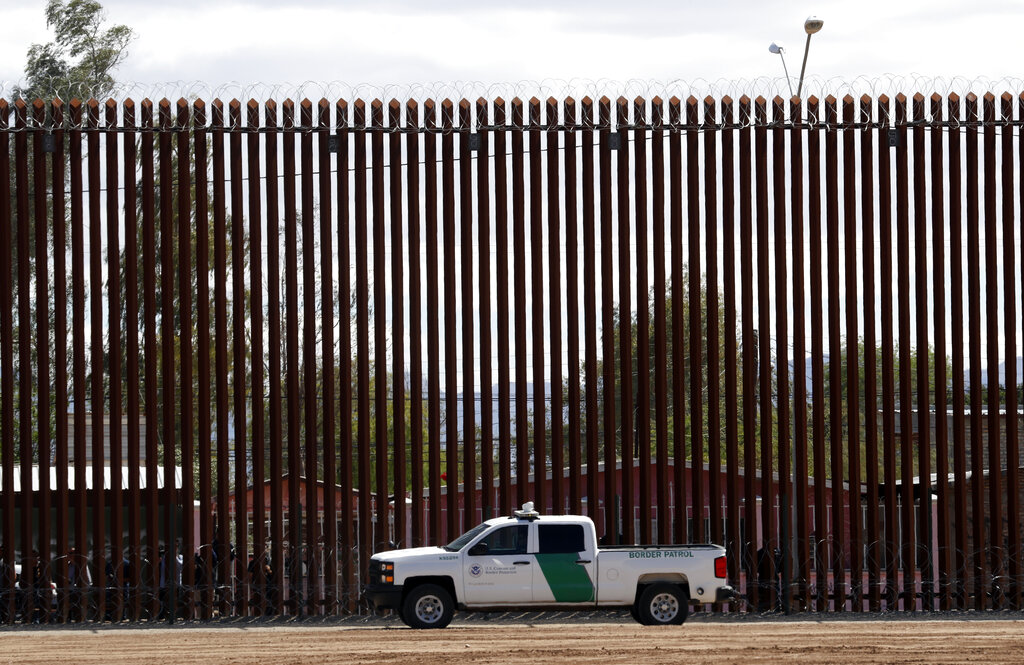PALMVIEW, Texas (BorderReport.com) — Sebastian Bonilla, a 23-year-old engineering student at the University of Texas Rio Grande Valley, camps, fishes and enjoys the great outdoors of Bentsen-Rio Grande Valley State Park and its surrounding areas most every day. And he doesn’t want President Donald Trump to build a border wall through his outdoor playground.
“The wall, we don’t need it. We never did. I know it’s really controversial but I’ve been here all my life and we never needed it. So why do we need it now?” Bonilla asked Thursday, as he hiked through caliche rock in near-100 degree heat atop a levee road through this pristine state park to get a glimpse of where construction crews are clearing land to build Trump’s border wall.
“If you’re putting up a wall you have to tear down all the wildlife and environment and replace it and I don’t like that,” Bonilla said Thursday as he slipped past a no entry sign and a Border Patrol truck stationed on the levee to prevent onlookers.
With his fishing pole in hand, Bonilla chatted about South Texas’ environmental beauty.
He talked about a nearby 900-year-old Montezuma bald cypress tree that has been standing for nearly a millennium but would be inaccessible if current border wall construction plans hold. He chatted about his favorite fishing hole, his dreams of planting more trees in South Texas one day, and tried to catch the American Snout butterflies fluttering about.
But after 40 minutes of walking, as he came around a bend to see a gaping area of cleared lands carved from lush forest and brush where the wall is to be built, Bonilla grew noticeably quieter and sad.
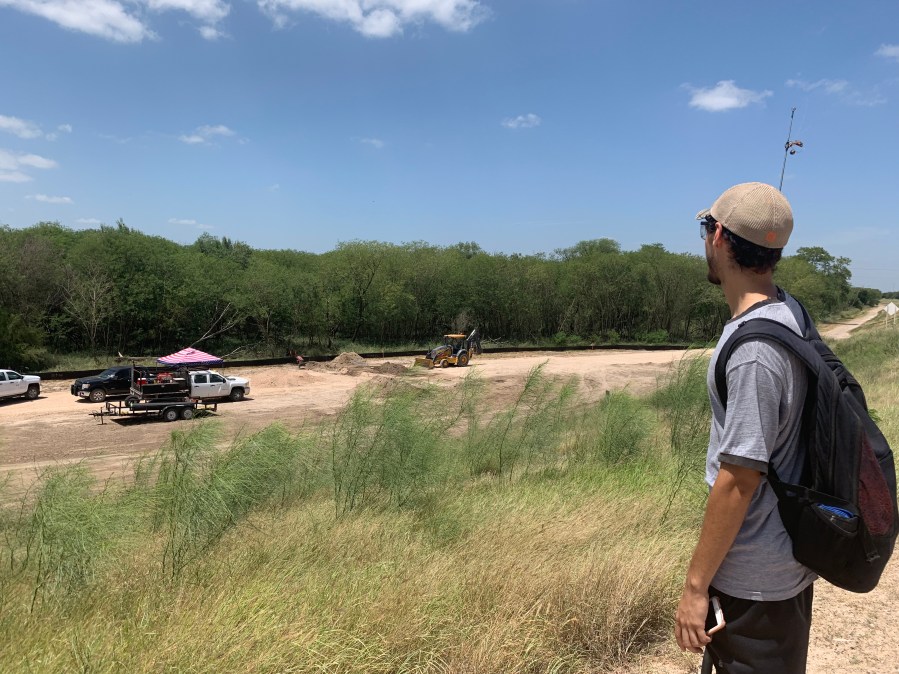
Bonilla isn’t alone. Many folks in the Rio Grande Valley oppose expanding the wall fencing here. But with over $1 billion already appropriated by Congress to build 33 miles of additional wall fencing in South Texas, and sections of land like this already being visibly cleared, opponents fear that steel posts could begin going up very soon.
When will the wall go up?
Federal officials, however, have yet to retain all of the borderlands where they plan to build the wall. And there are some tracks of land that Congress has exempted, especially those containing wildlife, such Bentsen State Park, the adjacent National Butterfly Center, and Santa Ana Wildlife Refuge in Alamo. These exemptions came about after an outcry from environmentalists, community leaders and politicians, like former U.S. Rep. Beto O’Rourke, D-Texas, who is now campaigning to be the Democratic presidential candidate in 2020.
“CBP will proceed with construction as real estate becomes available within this project area,” Customs and Border Protection wrote in a statement. “(CBP) continues to take steps to expeditiously plan, design, and construct a physical wall along the southern border, using appropriate materials and technology to most effectively achieve operational control of the southern border.”
Deterring illegal migration
South Texas has been the No. 1 entry zone for illegal immigration since a surge of migrants began entering through the area in 2014. President Trump campaigned on the promise of building a wall on the Southwestern border, which he says will deter migrants from entering.
“The RGV Sector is the busiest sector in the nation and accounts for more than 40 percent of the illegal alien apprehensions, more than 43 percent of the seized marijuana in the southwest border for the fiscal year to date, and is second of the seized cocaine. RGV accounts for a large percentage of the southwest border illegal alien apprehensions and narcotic seizures and the majority of its activity is occurring in areas where RGV has limited infrastructure, access and mobility, and technology.,” CBP wrote.
A threat to wildlife, resident
The Trump Administration’s planned wall would stand 30-feet-tall — 12 feet higher than the current 18-foot levee wall, which was built in 2008-10 to help with flood control. There will be a 150-foot-wide enforcement zone surrounding the wall, which “will include all-weather roads, lighting, enforcement cameras, and other related technology,” CBP wrote.
But Scott Nicol, former chairman of the Sierra Club’s Borderlands Committee and a member of the Lower Rio Grande Valley Sierra Club, doubts a wall will stop migrants. He says many times he has scaled over the existing wall, and done it in less than a minute. However he says the wall will threaten wildlife, and endanger area residents.
That is because the 6-inch-wide steel bollards, to be spaced 4 inches apart, could clog with debris in heavy rains, and cause flooding of homes and lands in this flood-prone region, especially in Starr County, he said.
“An animal that is small enough to squeeze through a four-inch gap pretty much could, but nothing else will. Ocelots will never fit through that like. Bobcats and lots of the species that move around through the wildlife refuges can’t squeeze through a 4-inch gap,” Nicol said.
Starr County lacks arroyos — also called a wash, which are dry creeks or gulches that fill and flow after sufficient rain. “Those walls are going to act like dams. CBP claims that water will pass harmlessly between those spaces between bollards, except every time they’ve built that same design in Arizona across a wash, the bollards get clogged with debris,” Nicol said. “They are going to have much worse flooding and peoples’ lives are going to be put at risk.”
They are going to have much worse flooding and peoples’ lives are going to be put at risk.”
Scott Nicol, Lower Rio Grande Valley Sierra Club
Different buckets of money
Money for construction of a border wall in South Texas is coming from different buckets of money. In 2018, Congress gave Customs and Border Protection $455 million to build walls in Hidalgo County and $196 million to build walls in Starr County. In 2019, lawmakers appropriated another $1.4 billion for border walls in Starr, Hidalgo and Cameron counties. The Trump Administration has also indicated it wants to take money out of the Treasury Executive Office for Asset Forfeiture funds to supplement costs.
The current fence was built with funds appropriated from the Secure Fence Act of 2006, which authorized and partially funded the construction of 700 miles of fencing along the Mexican border. In South Texas, these sections were built for flood control and have giant spaces, some miles wide, in between. The Trump Administration wants to close these gaps (minus the exempt wildlife areas) and put up 30-foot-tall steel beams with a five-foot anti-climb plate of solid steel at the top to deter climbers
Nicol doubts the anti-climb plate will stop migrants, however. And he says on any given day, rickety, hand-made wooden ladders can be found strewn at the base of the current fencing system showing where migrants had scaled the fence that divides the property of the Old Hidalgo Pumphouse Museum and World Birding Center in Hidalgo, Texas.
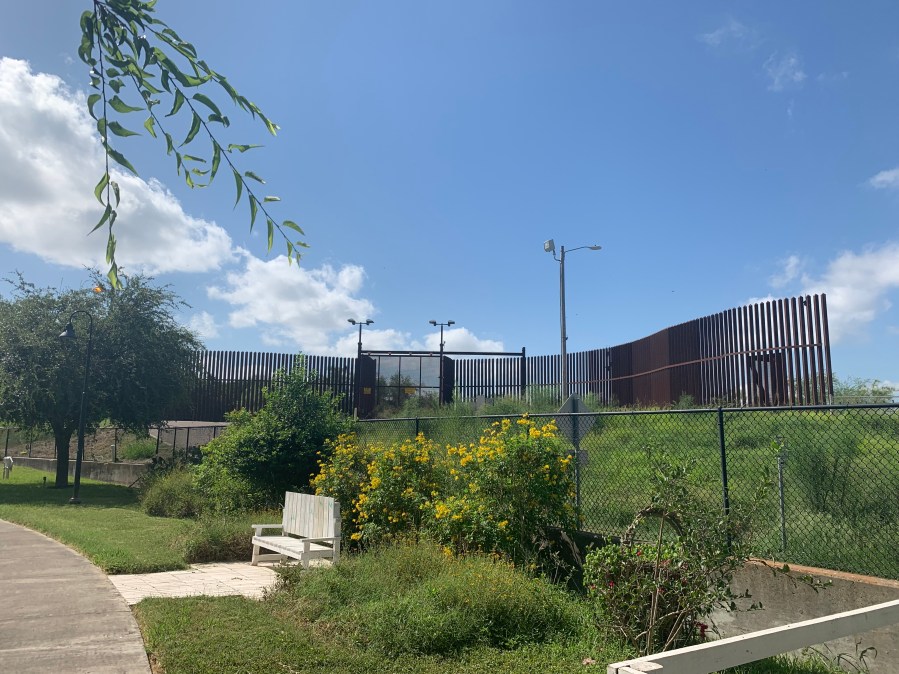
The Sierra Club is working with other nonprofits like the Texas Civil Rights Project, Catholic Charities and La Union Pueblo Entero (LUPE) to bolster opposition to a wall. But with several environmental waivers already granted for construction of sections in South Texas, he is growing frustrated, and believes that only through public outcry will construction of a border wall cease.
“We are doing everything we can to fight against these walls, both in court and in terms of trying to generate public opposition to it. These walls are entirely political,” Nicol said. “If enough people reach out to their members of Congress and let them know this is politically toxic, we’re not going to get walls. That’s how Santa Ana (Wildlife Refuge) got off the chopping block. That’s how the Butterfly Center got off the chopping block.”
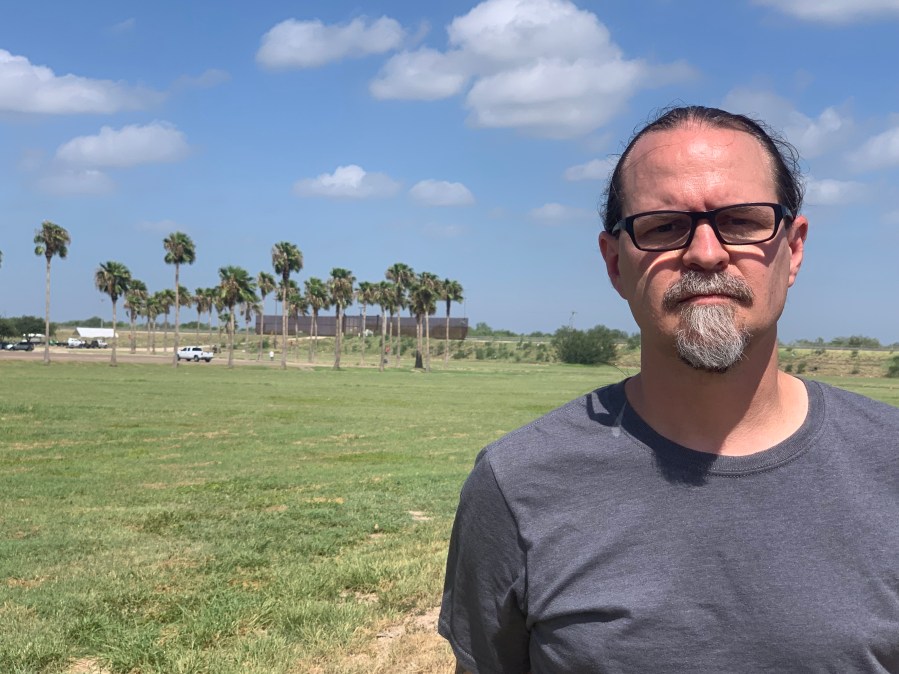
As for Bonilla, he’s returning with his fishing pole daily to spend what he believes are his last remaining months enjoying this bounty of nature.
“It’s not right, especially when you don’t get the input of the people that live here and have lived here all their lives,” Bonilla said. “I’m glad there’s a lot of organizations trying to come down and help us stop it. But sometimes I kind of feel it’s not going to be enough. It’s a river, we’re a border and you can’t privatize it.”
Contact Sandra Sanchez at SSanchez@BorderReport.com.
